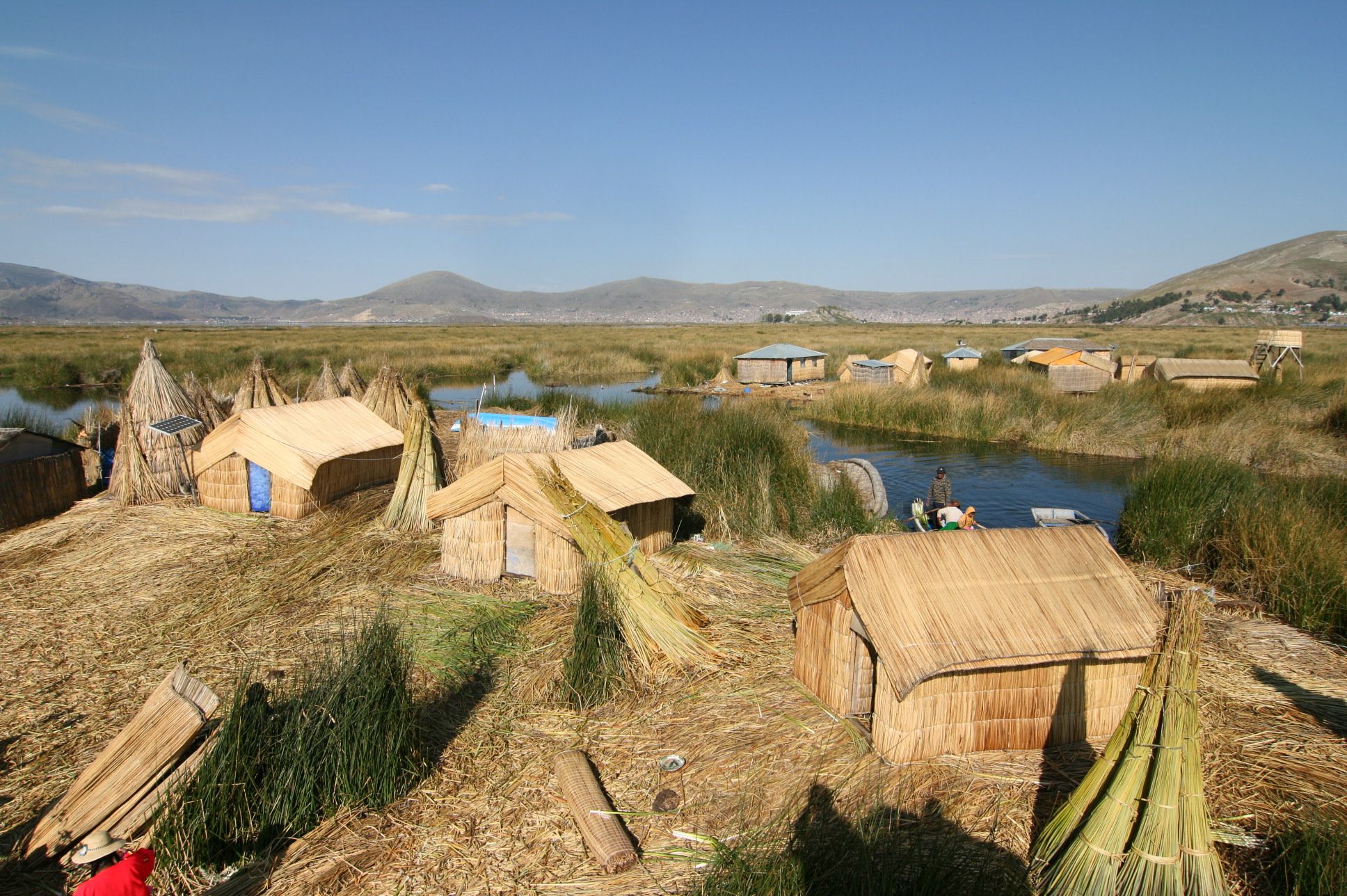On arriving to the shores of Lake Titicaca you notice a few things. The first is the altitude. It's really high up – around 3800 metres above sea level – which you notice because the lack of oxygen starts giving you headaches, and also because the sun cuts through the thin air and burns you twice as fast as normal unless you are generous with the sunscreen.
The second thing you notice is the lake's size. It's so huge that calling Titicaca a 'lake' is an understatement; at 8000 square kilometres, it's big enough to have thousands of people living on its islands.
But by far the most interesting feature of the lake is the Uros community, about 2000 people who live on manmade floating islands built with reed.

These islands are made of Totora, a reed that grows on the lake's shores. For several hundred years the islanders have been building and living on these reed islands, using the mobility of the islands to protect them from mainland invaders.
I spent two days on one of these floating islands, owned by Felix, an enterprising Uros-islander who had constructed three cabins on his island and listed them on AirBnB.
The islands seem surprisingly modern in some ways -- most islanders have some form of electricity through solar panels, use gas to cook food, have hot water for showers using solar heaters, and can use 4G network connectivity to access the internet.
While the islands are built of reeds, many of the homes on them don't seem to use reed as much as they used too. Instead I sometimes saw roofs and walls made with more modern materials like tin or plywood.
There is a service boat that visits the islands twice a day where islanders can buy groceries, and another boat comes a few times a week for garbage collection.
There are schools on the floating islands to serve the community: a kindergarten, a primary school, and a middle school. There is no high school, so older children are taken by boat to a high school in the nearby city of Puno.

The thing I was most curious about was how the islands were constructed.
Our AirBnB host soon gave us an overview of the process. The key to making the islands float is the foundation. How do you build a floating foundation you can put fairly heavy structures on top of? The islanders found an ingenious solution.
The roots of Totora reed are hollow and can float. During the dry season the reed grows on the marshy shores of the lake. When the rainy season comes, water level rise causes the reed roots detach themselves from the lake bed and begin to float, along with the chunk of the lake bed they were attached to. Islanders collect the floating chunks together and tie them with rope to form the island.
So the foundation is actually a piece of the lake bed, which floats because the reed has dug its hollow roots into it!
Once the foundation is ready, the rest of the process is simpler. Layers of reed are placed on top of it. After several layers have been placed the island will be solid enough to build small structures on. Every few weeks a new layer of reed has to be added as the reed at the bottom decomposes with time.
The islands are mostly stationary, anchored with ropes to Eucalyptus sticks that have been stuck into the lake bed. When necessary an island can be moved by removing the anchors and attaching the ropes to a motorboat that will tug it to its new destination.
I've also heard that families can split their island if they have a row and want to go their separate ways. For example if the daughter-in-law and the mother don't get along in the family, the islands will be split to avoid conflicts.
In this way the islands are living structures: the islanders feed them reed, grow or shrink them as needed, move them from place to place, and finally retire them when they reach the end of their lives (usually after about 30 years).
